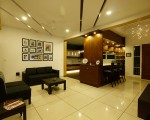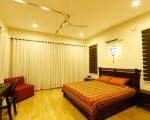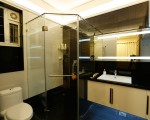Architecture
Beautiful: inside and out
It is never about creating a building but creating a space or an environment that an architect strives to achieve. A space that is not only defined by its dimensions and usage but by the people for whom it is designed for. The Wilson’s residence in Kochi by architect Herman Fernandez stays true to this thought. An abode of light and fresh air, the house is a lesson in simplicity and finesse.
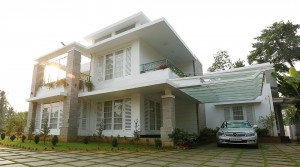 It is never about creating a building but creating a space or an environment that an architect strives to achieve. A space that is not only defined by its dimensions and usage but by the people for whom it is designed for. The Wilson’s residence in Kochi by architect Herman Fernandez stays true to this thought. An abode of light and fresh air, the house is a lesson in simplicity and finesse.
It is never about creating a building but creating a space or an environment that an architect strives to achieve. A space that is not only defined by its dimensions and usage but by the people for whom it is designed for. The Wilson’s residence in Kochi by architect Herman Fernandez stays true to this thought. An abode of light and fresh air, the house is a lesson in simplicity and finesse.
Seeing green
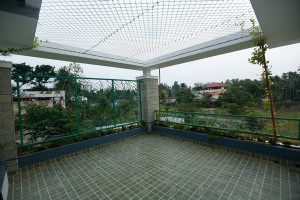 The 3000 square feet residence is strategically located in the corner of a well maintained garden. This means that as you pull into the drive way you are welcomed by a view of fresh lawns and flowering plants. The garden is divided into three levels; the formal garden with a checkered board of Mexican grass and granite, the rear informal garden and the verdant terraces. Hence there is always a patch of green lingering at the edge of your vision. There is ample space for a gathering or a game of backyard football. The land has been laid out in such a way that every drop of water that falls leeches back into the soil. The client explains that a garden was of utmost importance to them and no house is complete without it.
The 3000 square feet residence is strategically located in the corner of a well maintained garden. This means that as you pull into the drive way you are welcomed by a view of fresh lawns and flowering plants. The garden is divided into three levels; the formal garden with a checkered board of Mexican grass and granite, the rear informal garden and the verdant terraces. Hence there is always a patch of green lingering at the edge of your vision. There is ample space for a gathering or a game of backyard football. The land has been laid out in such a way that every drop of water that falls leeches back into the soil. The client explains that a garden was of utmost importance to them and no house is complete without it.
The first look
The simple layout of the garden is carried over onto the exteriors. A play of open and closed spaces, the façade is of pristine white interrupted by stone pillars. Decorative railings adorn the terraces with creepers spilling onto the building from the wire mesh ceiling of the terraces. Strong horizontal detailing define the structure, be it the louvers on the windows, the wall treatment, the bold parapets or the cantilevered roof of the car park. The car park is not a defined space and is an extension of the garden hence opening up the plot and reducing the square footage.
Walking in
The house has a definite effect. A sense of calm envelopes you as you enter the home. The well lit and airy rooms open out into each other creating an interesting volume. The skylights provided bring in filtered light that makes the space look larger than it is. The décor is minimalistic with white walls and neutral tones. The ceiling is designed with strip lighting that creates a point of interest. The floors are laid with high quality vitrified tiles and epoxy joints infused with glitter. There are two detailing elements that define the aesthetic. One is the burnt and brushed natural stone laid on the pillars and the other is wooden detailing on the stairwell wall. This detail is also carried over to the kitchen cabinets. The work is done with so much finesse that we are told each cabinet panel took a day to complete. Imported beechwood has been used to demarcate spaces (like the prayer area) and the natural color of the wood has been maintained. The interesting use of the wood paneling is highlighted by the lighting design which mostly uses that of the recessed style.
The living and dining areas merge into one another and form most of the ground floor. The dining area has French windows that open out into the garden and is ideal for your morning cup of tea. Almost all the walls have large windows with a view of the garden outside. The open planning goes to serve the fact that most activities in the house can be monitored from the central family living room. The open pantry kitchen is separated from the family living by a custom made family dining table. The unit also serves as a showcase and storage.
Nail the detail:
- The strip lighting under the Kitchen counters
- The raised platform with brass detailing for the staircase
- Mirror lighting for all the bathroom mirrors
- The family photos
- Staircase wall detailing
- The bookcase upstairs
Having your own terrace garden:
- 25 kg per sq ft is the amount of dead load permitted
- There are different plant media in the market other than soil which are less heavy
- 6 to 8 inches of growth medium is required
- Fibrous root plants are the safest
- Use good water proofing
- There should be enough slope for water to drain out
- Use outdoor lights and furniture
- Keep track of the electric and water supply lines
- Consult a structural engineer
Architecture
Creating a Cozy Living Room: Tips for Comfort and Style
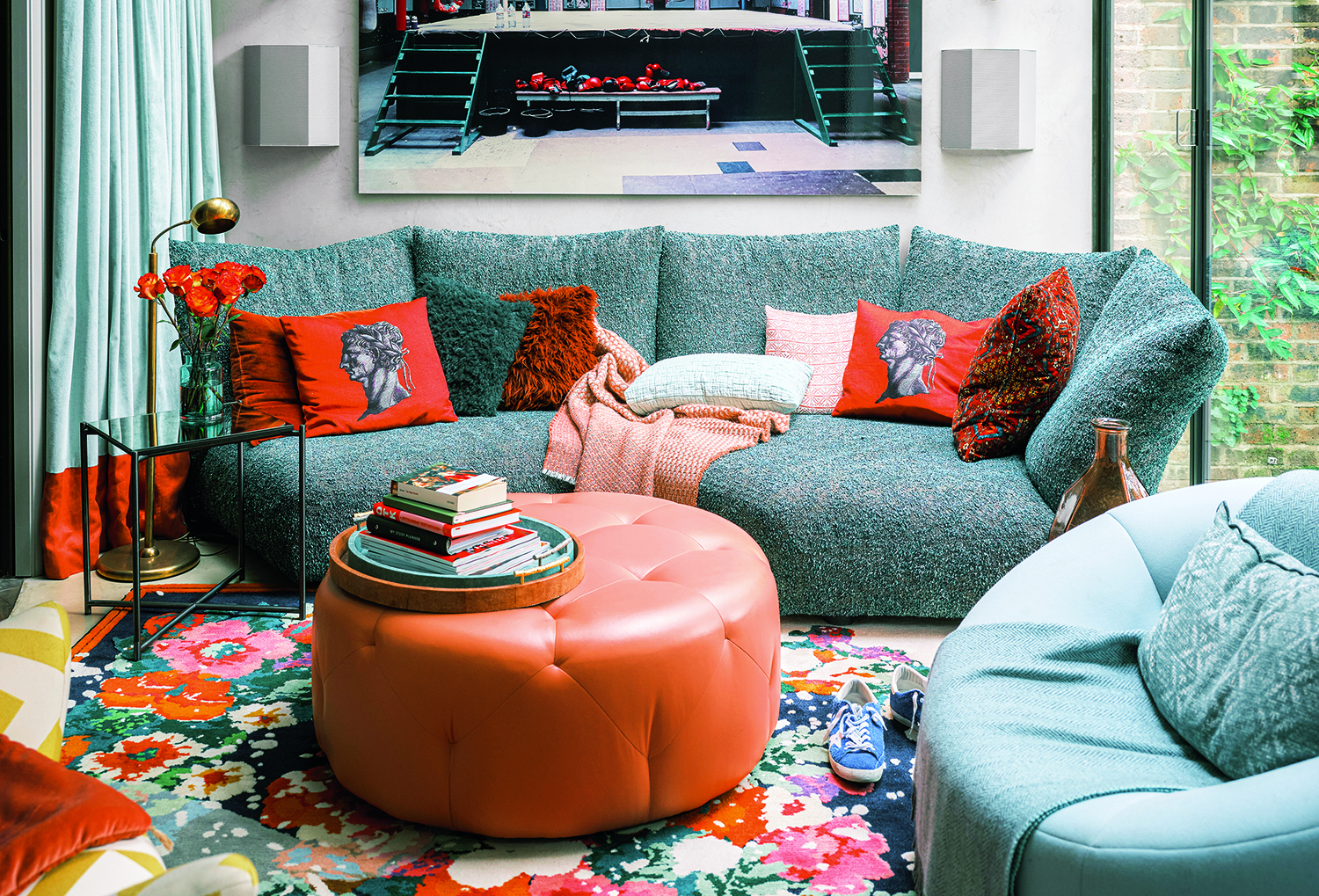
Your living room is more than just a space for entertaining; it’s a sanctuary where you unwind, relax, and spend quality time with loved ones. Creating a cozy living room involves a blend of comfort and style that makes the space inviting and functional. Here are some tips to help you achieve that perfect balance:
Choose the Right Furniture
Start with furniture that combines comfort and functionality. Opt for a plush sofa with deep cushions, perfect for lounging. Consider adding a cozy armchair or a recliner for additional seating. Make sure the furniture arrangement promotes conversation and allows for easy movement throughout the room.
Layer Your Lighting

Lighting plays a crucial role in setting the mood. Use a mix of lighting sources to create a warm ambiance. Combine overhead lights with floor lamps, table lamps, and wall sconces. For added coziness, incorporate dimmers or smart bulbs that let you adjust the brightness to suit different times of day and activities.
Add Textures with Throws and Pillows
Textures are key to a cozy living room. Layer different fabrics, such as soft throw blankets, plush pillows, and textured rugs. Choose fabrics like wool, velvet, and cotton that add warmth and comfort. Mix and match patterns and colors to create visual interest and a personalized touch.
Incorporate Warm Colors
Color influences the feel of a room. Opt for warm, neutral tones like beige, taupe, or soft gray for a calming effect. Accents in rich colors like deep blues, earthy greens, or warm terracotta can add depth and coziness. Use these colors in your furniture, accessories, and wall decor.
Use Rugs to Define Spaces
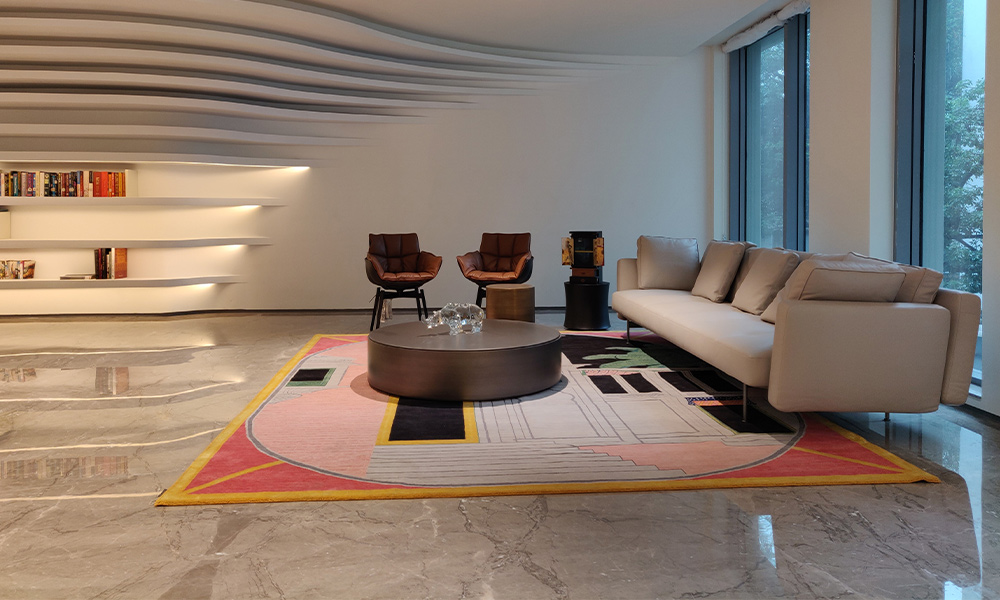
Rugs can help define different areas within a living room and add a layer of warmth underfoot. Choose a rug that complements your furniture and adds softness to the space. A large area rug can anchor the room, while smaller rugs can be used to highlight specific areas, like a reading nook or conversation zone.
Incorporate Natural Elements
Bring the outdoors in by incorporating natural elements. Plants not only add a touch of greenery but also improve air quality and create a calming atmosphere. Choose low-maintenance plants like succulents or snake plants if you’re not an avid gardener. Wooden furniture or decor pieces can also add a natural, grounded feel to the room.
Personalize with Artwork and Décor
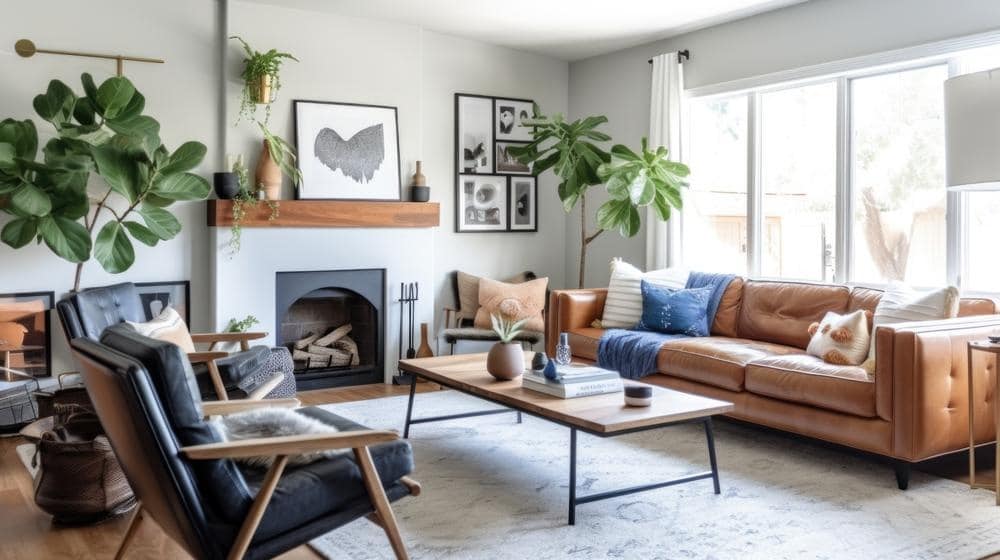
Add personality to your living room with artwork and decorative items that reflect your style. Choose pieces that resonate with you, whether it’s family photos, abstract art, or vintage finds. Arrange decor items in groups to create visual interest and avoid clutter.
Create a Focal Point
A focal point helps draw the eye and creates a sense of balance in the room. This could be a fireplace, a statement piece of art, or a stylish coffee table. Arrange your furniture and decor around this focal point to enhance the room’s overall cohesion and appeal.
Invest in Quality Window Treatments
Window treatments can impact both the look and feel of your living room. Opt for curtains or blinds that provide privacy while allowing natural light to filter through. Choose fabrics that complement your decor and add texture, such as linen or velvet.
Add Personal Touches
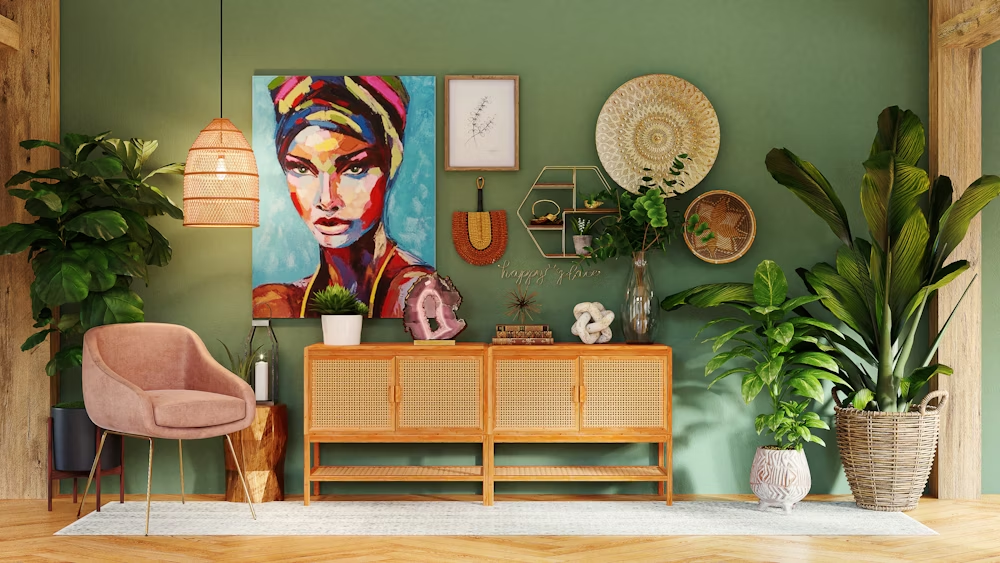
Finally, make the space truly yours by adding personal touches. Incorporate items that have sentimental value or reflect your interests and hobbies. Whether it’s a collection of travel souvenirs, a beloved quilt, or unique decorative objects, these elements will make your living room feel more inviting and personal.
By thoughtfully combining these elements, you can create a cozy living room that serves as a comfortable retreat and a stylish gathering place for friends and family. Enjoy the process of making your space uniquely yours and revel in the comfort and warmth it provides.
Architecture
The Art of Feng Shui: Creating Harmony in Your Home

Feng Shui, an ancient Chinese art and science, is all about creating harmony and balance in our living spaces. By arranging our homes in accordance with Feng Shui principles, we can invite positive energy, known as “chi,” into our lives and promote health, wealth, and happiness. In this blog post, we’ll explore the fundamentals of Feng Shui and share practical tips for applying its principles to create a harmonious and inviting home environment.
Understanding the Basics of Feng Shui:
Feng Shui is based on the concept of “chi,” or life force energy, which flows through our environments and influences our well-being. The goal of Feng Shui is to create a harmonious flow of chi by arranging our surroundings in a way that promotes balance and harmony. This includes paying attention to the layout, orientation, and organization of our homes to optimize the flow of energy.
The Five Elements of Feng Shui:
In Feng Shui, there are five elements—wood, fire, earth, metal, and water—that represent different qualities and energies. By incorporating these elements into our home decor, we can create a sense of balance and harmony. For example, wood represents growth and vitality, while water symbolizes flow and abundance. By incorporating a balance of these elements into our living spaces, we can enhance the flow of positive energy and create a sense of equilibrium.
Applying Feng Shui Principles to Your Home:
Clearing Clutter: Clutter can block the flow of chi and create stagnant energy in our homes. Start by decluttering your space and getting rid of items that no longer serve a purpose. This will create space for fresh energy to flow and rejuvenate your home.
Balancing Yin and Yang: In Feng Shui, yin and yang represent the balance of feminine and masculine energies. Create a harmonious balance of yin and yang in your home by incorporating soft, nurturing elements (yin) with strong, active elements (yang).
Enhancing the Flow of Chi: Pay attention to the layout and arrangement of furniture in your home to optimize the flow of chi. Avoid placing furniture in direct line with doorways or blocking pathways, as this can disrupt the flow of energy. Instead, create open and inviting spaces that allow chi to circulate freely.
Incorporating Nature: Bring the outdoors in by incorporating elements of nature into your home decor. Plants, natural materials, and natural light can enhance the flow of chi and create a sense of vitality and well-being in your living spaces.
Room-By-Room Feng Shui Tips:
Living Room: Arrange furniture in a circular or semi-circular layout to encourage conversation and social interaction. Use soft, natural fabrics and incorporate elements of wood and fire to create warmth and intimacy.
Bedroom: Position your bed diagonally across from the door to command a clear view of the room while you sleep. Keep the space under your bed clear and clutter-free to promote restful sleep and relaxation.
Kitchen: Keep your kitchen clean, organized, and clutter-free to promote health and abundance. Incorporate elements of fire and earth, such as candles and earthy tones, to create a warm and inviting atmosphere for cooking and dining.
By incorporating the principles of Feng Shui into your home decor, you can create a harmonious and balanced living environment that supports your health, happiness, and overall well-being. Whether you’re decluttering your space, balancing yin and yang energies, or enhancing the flow of chi, the art of Feng Shui offers timeless wisdom and practical guidance for creating a sanctuary of peace and tranquility in your home.
Architecture
5 Sustainable Interior Design Trends to Embrace in 2024
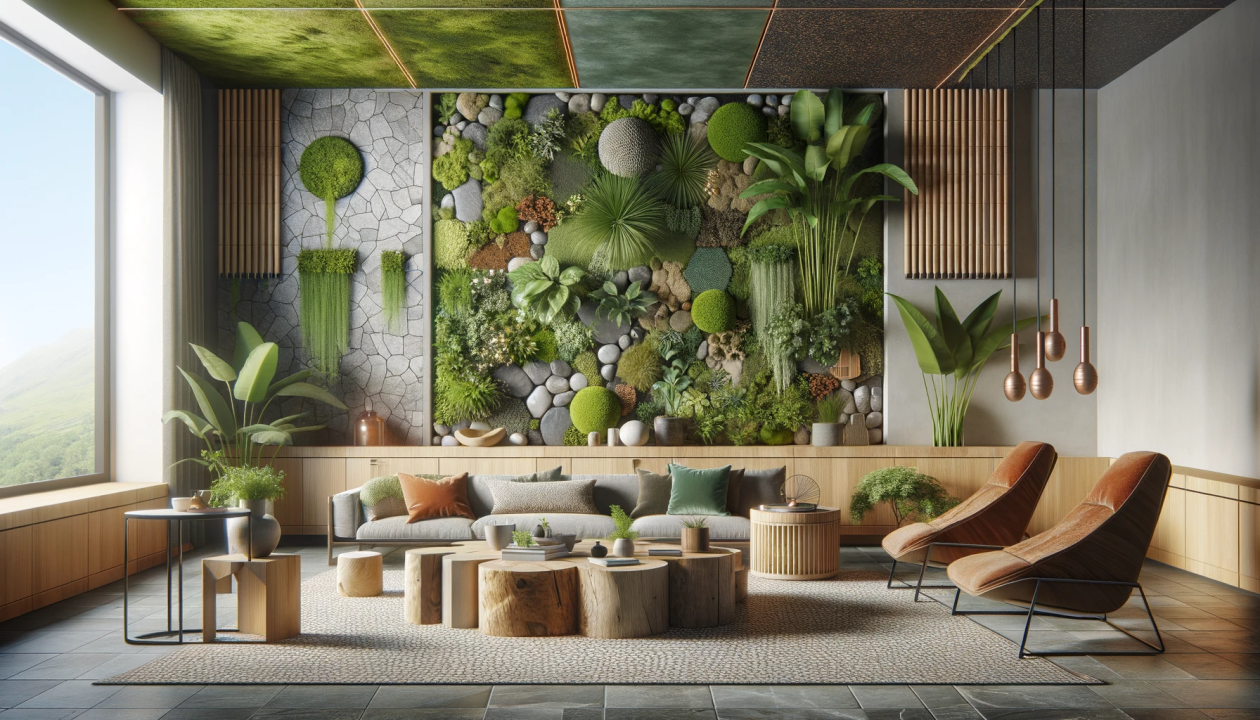
As the world becomes increasingly aware of the importance of sustainability, it’s no surprise that eco-friendly practices are making their way into the realm of interior design. In 2024, we can expect to see a surge in sustainable interior design trends that not only enhance the beauty of our living spaces but also minimise our environmental footprint. From repurposed materials to energy-efficient solutions, here are five sustainable interior design trends to embrace this year.
Upcycled Furniture:
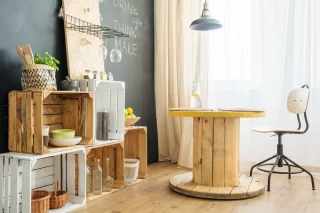
One of the most prominent sustainable interior design trends of 2024 is the use of upcycled furniture. Instead of buying new pieces, consider giving old furniture a new lease on life by refurbishing or repurposing them. From reclaimed wood tables to refurbished chairs, upcycled furniture adds character and charm to your space while reducing waste and conserving resources.
Biophilic Design:

Biophilic design, which emphasizes a connection to nature, continues to gain popularity in 2024. Integrating natural elements such as plants, natural light, and organic materials into your interior design not only enhances aesthetics but also promotes well-being and sustainability. Consider incorporating living walls, indoor gardens, and sustainable wood finishes to bring the outdoors inside and create a healthier living environment.
Energy-Efficient Lighting:

With a growing focus on energy conservation, energy-efficient lighting solutions are becoming a staple in sustainable interior design. LED lights, in particular, consume significantly less energy than traditional incandescent bulbs and last much longer, reducing both energy consumption and maintenance costs. Additionally, consider incorporating natural light sources such as skylights and large windows to maximize daylight and minimize the need for artificial lighting during the day.
Sustainable Textiles:
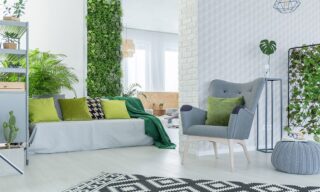
When it comes to upholstery and soft furnishings, opting for sustainable textiles is key to reducing environmental impact. Look for fabrics made from organic or recycled materials, such as organic cotton, hemp, bamboo, or recycled polyester. These materials not only reduce the use of harmful chemicals and pesticides but also minimize waste and support eco-friendly production practices. Additionally, consider investing in durable, high-quality textiles that stand the test of time, reducing the need for frequent replacements.
Smart Home Technology:

In 2024, smart home technology continues to evolve, offering innovative solutions for sustainable living. From smart thermostats that optimize energy usage to home automation systems that control lighting and appliances, these technologies can help reduce energy consumption and increase efficiency in your home. Additionally, smart home devices such as occupancy sensors and smart meters provide valuable insights into your energy usage, empowering you to make informed decisions about resource management and conservation.
As we strive to create more sustainable living environments, embracing these five interior design trends can help reduce our environmental impact while creating beautiful and functional spaces. Whether you’re upcycling old furniture, incorporating natural elements, or investing in energy-efficient technologies, every sustainable choice contributes to a greener future for generations to come. So let’s embrace these trends and make sustainability a cornerstone of our interior design practices in 2024 and beyond.
-

 Style11 months ago
Style11 months agoBridal Guide : Best Looks of Radhika Merchant Ambani
-

 Entertainment1 year ago
Entertainment1 year agoThe Stunning looks from Bhagya Suresh’s Wedding
-

 Fashion1 year ago
Fashion1 year agoMost Discussed Ajrakh Saree of Alia Bhatt
-

 Entertainment1 year ago
Entertainment1 year agoThe Most Stylish Guests of Bhagya Suresh Reception
-

 Entertainment1 year ago
Entertainment1 year agoBridal Bliss : All Bridal Looks of Swasika Vijay
-

 Movies1 year ago
Movies1 year agoA Nostalgic Journey Through Love &Cinema : Best Bollywood Romantic 90s Movies
-

 Fashion1 year ago
Fashion1 year agoMajor Denim Trends You Need To Know in 2024
-

 AD8 months ago
AD8 months agoPopular Curtain Fabrics to Consider for Your Home

